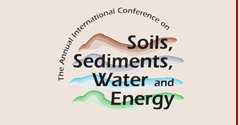Abstract
We report the ionic migration of antimony during chemical weathering, with some particular cases. Ichinokawa abandoned mine of Shikoku Island, Japan, is famous for the production of stibnite. The antimony deposits are mainly in Sambagawa metamorphic rocks and the brecciated rocks (Ichinokawa breccia) formed through a hydro-fracturing process associated with hydrothermal fluid related to Tertiary igneous activity around the area. Antimony content in stream water around the mine was extremely high (over 200 &#;g/L), which indicates that antimony dissolves into the water from the country rocks by chemical weathering. We examined the antimony contents in variously weathered and altered country rocks in the streambed, to understand the transfer of the element into the stream water. Consequently, antimony content in brown-colored, strongly weathered and altered part of the rocks was higher than that in the unweathered (or weakly weathered) part. The antimony content in strongly weathered part was several tens to hundreds ppm, although the content in unweathered part was significantly low, sometimes under the detection of XRF. This may indicate that the antimony in the stream water is adsorbed selectively in the strongly weathered and altered part of the streambed rock. The strongly weathered and altered rocks contain many iron hydroxides, which may trap antimony ion from the water. A similar phenomenon was observed in the other area. This suggests that a high distribution of antimony ion into the strongly weathered and altered rocks including iron hydroxides against the water is ubiquitous.
Recommended Citation
Sano, Sakae; Sakakibara, Masayuki; Chiba, Etsuko; and Hori, Rie
(2010)
"Sorption Of Antimony In Stream Water By Weathered And Altered Rock,"
Proceedings of the Annual International Conference on Soils, Sediments, Water and Energy: Vol. 12, Article 14.
Available at:
https://scholarworks.umass.edu/soilsproceedings/vol12/iss1/14
